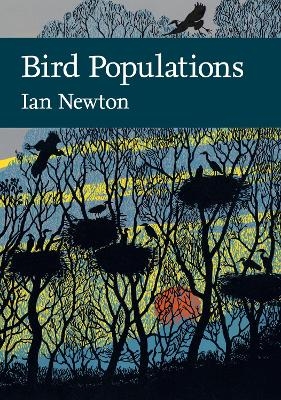
Bird Populations
Seiten
2013
William Collins (Verlag)
978-0-00-742953-0 (ISBN)
William Collins (Verlag)
978-0-00-742953-0 (ISBN)
- Titel z.Zt. nicht lieferbar
- Versandkostenfrei
- Auch auf Rechnung
- Artikel merken
In the latest addition to the New Naturalist series, Ian Newton explores bird populations and what causes their fluctuation – food supplies, competitors, predators, parasites, pathogens and human activity.
The combination of a rapidly expanding human population, a predominantly utilitarian attitude to land, central government policy on land use and increasing mechanisation have combined to promote massive changes in land use in recent decades than at any previous comparable period. These developments have in turn brought huge changes in bird habitats and populations; some species dependent on the old landscapes declined, while others have increased. Over the same period, changing public attitudes to wildlife allowed previously scarce bird species to recover from past onslaughts, while climate warming has promoted further changes.
In this seminal new work, Ian Newton sets out to explain why different bird species are distributed as they are, and changed over the years in the way that they have. The regular watching and study of birds now provides a source of recreation and pleasure for very large numbers of people, while continued monitoring of bird numbers can also alert us to impending environmental problems. For all of us, a world with fewer birds would be a poorer place.
The combination of a rapidly expanding human population, a predominantly utilitarian attitude to land, central government policy on land use and increasing mechanisation have combined to promote massive changes in land use in recent decades than at any previous comparable period. These developments have in turn brought huge changes in bird habitats and populations; some species dependent on the old landscapes declined, while others have increased. Over the same period, changing public attitudes to wildlife allowed previously scarce bird species to recover from past onslaughts, while climate warming has promoted further changes.
In this seminal new work, Ian Newton sets out to explain why different bird species are distributed as they are, and changed over the years in the way that they have. The regular watching and study of birds now provides a source of recreation and pleasure for very large numbers of people, while continued monitoring of bird numbers can also alert us to impending environmental problems. For all of us, a world with fewer birds would be a poorer place.
Ian Newton is an ornithologist and applied scientist, and a leading expert on bird ecology and biogeography, specialising in finches, waterfowl and birds of prey, especially the sparrowhawk. He graduated from Bristol University and gained his doctorate in finch behaviour at Oxford, followed by research on bullfinch damage in orchards. He joined the NERC in 1967, initially studying population ecology of geese and finches, followed by the impact of pesticides on birds of prey. He has written two previous New Naturalist volumes, Finches (1972) and Bird Migration (2010).
| Erscheint lt. Verlag | 29.8.2013 |
|---|---|
| Reihe/Serie | Collins New Naturalist Library ; Book 124 |
| Zusatzinfo | (200 colour photos and diagrams) |
| Verlagsort | London |
| Sprache | englisch |
| Maße | 155 x 222 mm |
| Gewicht | 1450 g |
| Themenwelt | Sachbuch/Ratgeber ► Natur / Technik ► Naturführer |
| ISBN-10 | 0-00-742953-3 / 0007429533 |
| ISBN-13 | 978-0-00-742953-0 / 9780007429530 |
| Zustand | Neuware |
| Haben Sie eine Frage zum Produkt? |
Mehr entdecken
aus dem Bereich
aus dem Bereich
Buch | Hardcover (2019)
Quelle & Meyer (Verlag)
CHF 55,90


